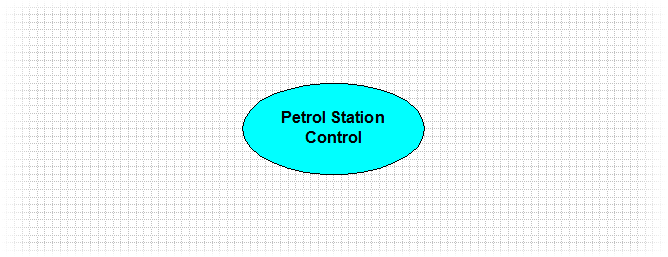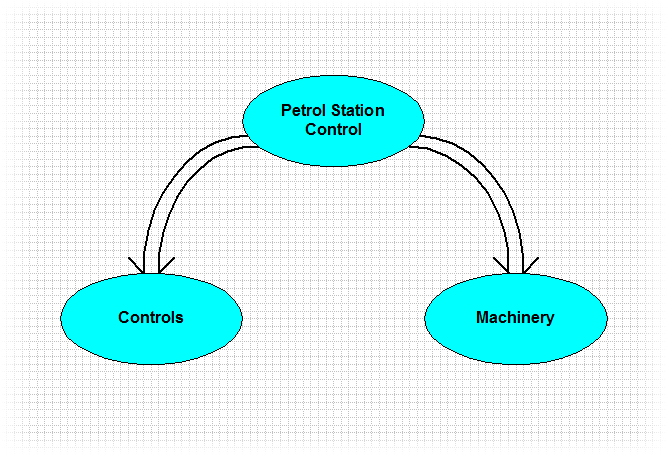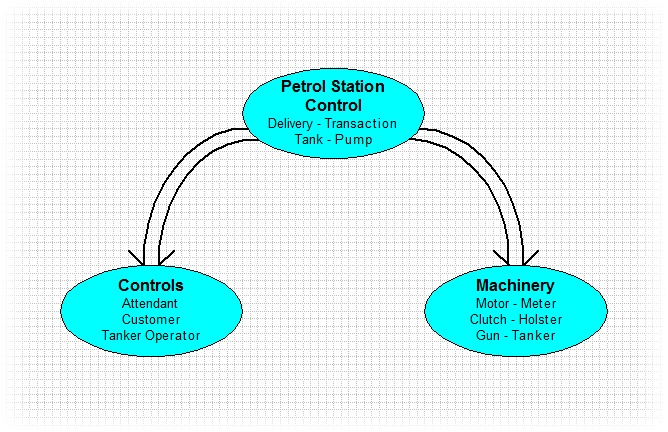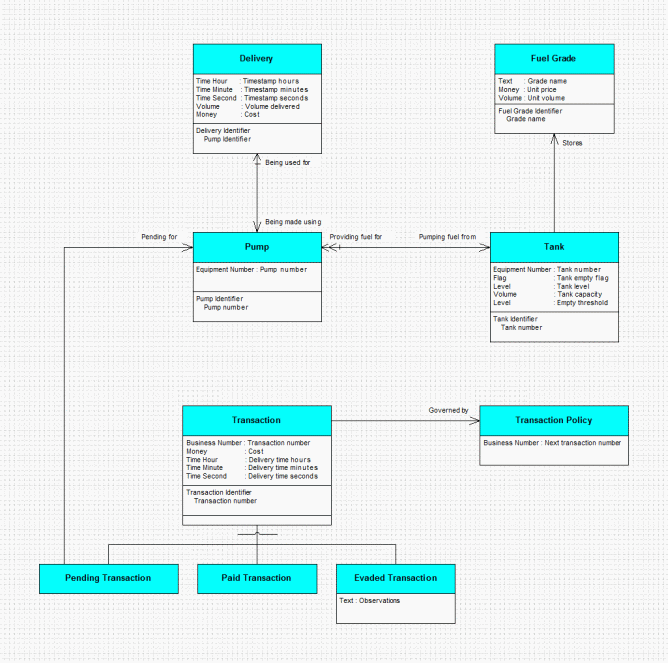 |
 |
|||||||||||||||||||||||||||
|
Home : Matrix Language : Model Examples : Petrol Station |
||||||||||||||||||||||||||||
 |
||||||||||||||||||||||||||||
|
Petrol Station Model |
||||||||||||||||||||||||||||
 |
||||||||||||||||||||||||||||
|
Introduction
The Petrol Station model documents an experiment to convert an existing MASL model to the Matrix language
MASL is a relatively new textual modelling language, having made its first public appearance in 2016
The language clearly builds on older action languages originating from the 1980's such as ASL and OAL. MASL is similar to Matrix in that it is not limited to the state action level but is capable of describing an entire model including projects, domains, objects and state transitions. The language has a C like syntax but also has a strong Ada influence.
Unlike Matrix, MASL allows a great deal of flexibility where the various model components can be defined. This would imply that modellers will be required to adhere to a style guide to ensure consistency of format between models.
MASL retains the programming approach to action description found in ASL and OAL. Unlike Matrix where navigation is a central feature and always operates on "live" objects, MASL "pulls out" collections of objects (or instances) which are later cycled through and processed.
Also, MASL navigation is used to jump from one entity to another in order to obtain, say an object's attribute's value. Whereas in Matrix, the main context changes to that entity.
Note: All Petrol Station MASL model code is UK Crown Copyright.
UML Diagram Notation Conversion
Unfortunately, the existing de facto UML notation is sub-optimal for Matrix analysis. Instead, the notation used in the Shlaer-Mellor method has been enhanced for use with the Matrix language. For completeness, the names of the Shlaer-Mellor diagrams have also been included in the table below:
Overview
The model describes the operation of a normal petrol station (filling station) that can be found on most main roads and contains the expected entities.
Pumps make deliveries to customers which should not be confused with petrol tankers making deliveries to a station's storage tanks. At the end of a delivery, a transaction is created that enables the customer to pay for the petrol.
Model Walkthrough
A model walkthrough can be found in the PSC.mod file in the original MASL repository
The Domain Bridge Diagram (DBD) below shows the top level application Petrol Station Control domain and sets the system boundary for the model.
Realm:Analysis_Of_Application (Domain)
In an actual project the application domain would be shown with all the other domains in the application as shown in the diagram below. Bridges to other domains are effectively "channels" that a domain sends events to and receives event from.
Realm:Analysis_Of_Application (Bridges)
It is often useful to name the major entities comprising a domain and to have them visible on the DBD. These are the usually the most central active entities and are displayed on each domain as shown below.
Realm:Analysis_Of_Application (Annotated)
The Entity Relationship Diagram (ERD) below shows the relationships between the various entities in the Petrol Station Control domain.
The entities have been taken directly from the MASL model except for the Transaction Policy entity which has been added to hold the next transaction number to be used. As required by Matrix, the ERD only shows relationships that are actually necessary for the model to operate.
The notation used by the diagrams below is based on Shlaer-Mellor Method notation (similar to UML)
Domain:Matrix_Installer
The diagram below shows all the STDs from the Petrol Station Control domain without showing how they interact. Click on the picture to get an expanded view of the diagram.
Domain State Transition Diagrams (Separate)
Click on the picture below to get an expanded view of the diagram showing the source of actual events and their destination among the collaborating entity STDs. An event based notation is used
Domain State Transition Diagrams (Annotated)
The Original MASL Model
During conversion to Matrix several observations were noted:
General
Delivery Entity
Pump Entity
Tank Entity
Fuel Grade Entity
|
||||||||||||||||||||||||||||
|
|
||||||||||||||||||||||||||||
|
Redundant Relationships Pump Pump Fuel_Grade Transaction Pending_Transaction Evaded_Transaction Paid_Transaction |
: Delivered_fuel_for : Delivered_fuel_for : Stored_in : Records_fuel_delivery_for : Specialisation : Specialisation : Specialisation |
: Pending_Transaction : Transaction : Tank : Pump : Transaction : Transaction : Transaction |
||||||||||||||||||||||||||
|
Matrix Model
The Matrix (Professional Edition) of the Petrol Station model is available
Expected Output
The output log from the Matrix version of the Petrol Station model executing a short scenario is available
No output logs from the original MASL model were found in the GitHub repository. |
||||||||||||||||||||||||||||
| Copyright © 2017 Dark Matter Systems Ltd. All Rights Reserved. | ||||||||||||||||||||||||||||
|
|
||||||||||||||||||||||||||||







